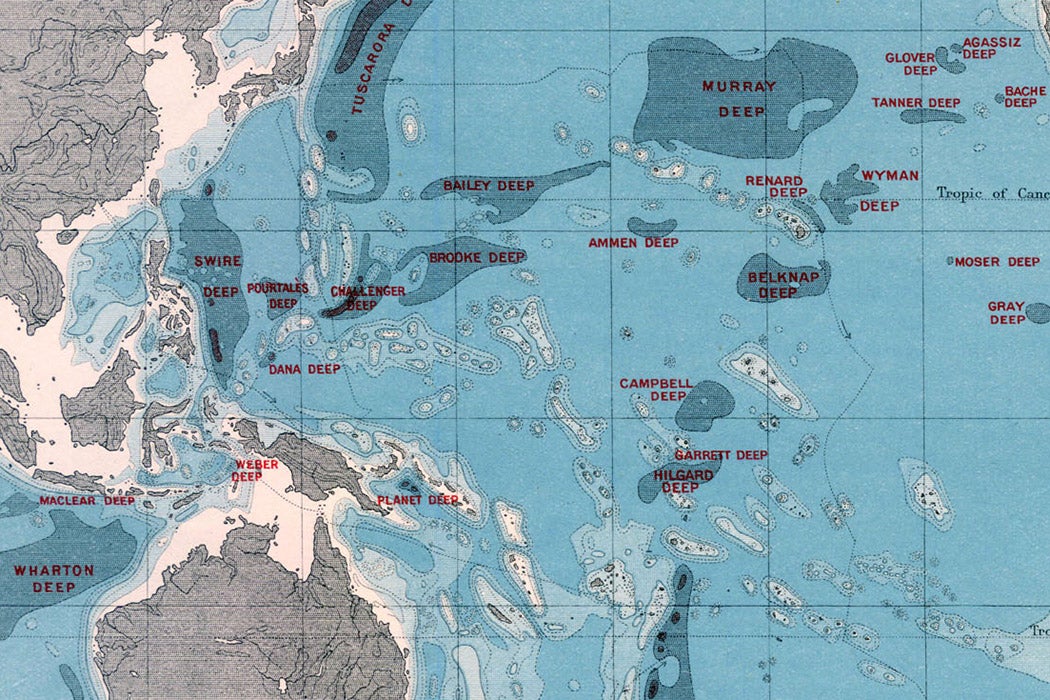How do you determine the health of a marine ecosystem that exists nearly 11,000 meters under the sea? Apparently, all you have to do is listen. And listening is exactly what National Oceanic and Atmospheric Administration oceanographer Robert Dziak and a team of researchers did in 2015, when they dropped specialized acoustic equipment into Challenger Deep, an area located in the Pacific Ocean at the bottom of the Mariana Trench.
At first, the group of scientists didn’t expect to hear much. As Dziak said in a press release, “You would think that the deepest part of the ocean would be one of the quietest places on Earth.” To the team’s surprise, this area is rife with noise. Over the course of twenty-four days, their equipment recorded a cacophony of sounds, including the rumble of earthquakes, the chatter of nearby whales, and the commotion of a typhoon wreaking havoc overhead.
What was even more notable, however, was the fact that several of the sounds actually originated from anthropogenic, or man-made, sources. During the project, the team’s underwater microphone captured the unmistakable roar of boat propellers, as well as military sonar and seismic air guns; the latter is a controversial method of finding oil and gas deposits hidden beneath the ocean floor. Anthropogenic noise has become increasingly pervasive in the ocean over the past few decades. Even so, until Dziak and his colleagues catalogued the Challenger Deep soundscape, most scientists assumed that this form of pollution couldn’t penetrate to such extreme depths.
The distance that sound can travel in the ocean is highly dependent on its temperature and pressure, and in the case of the Challenger Deep basin, sound can also be blocked by the rocky trench walls at its northern and southern borders. However, the researchers discovered that the water column directly above the deep-sea basin allows surface noise to favorably propagate down to the seafloor with little loss in sound intensity. Unfortunately, because this area is near Guam, a major shipping hub and the location of a US Naval base, ship traffic was able to significantly contribute to the sounds of the trench, echoing throughout the region for ten to twenty-four hours per day.
Weekly Newsletter
Because deep-sea ecosystems are so vastly understudied, it’s unclear how human noise pollution might affect Challenger Deep’s inhabitants. But based on the effect it has had on other marine species, the impact is likely to be negative. That said, thanks to the data collected during this project, oceanographers now have a record of sounds that can double as a baseline for the health of this ecosystem. As future studies continue to eavesdrop on Challenger Deep, they can use this data to assess how the soundscape has changed over time, and more importantly, if this noise pollution problem is getting worse.
Support JSTOR Daily! Join our new membership program on Patreon today.







